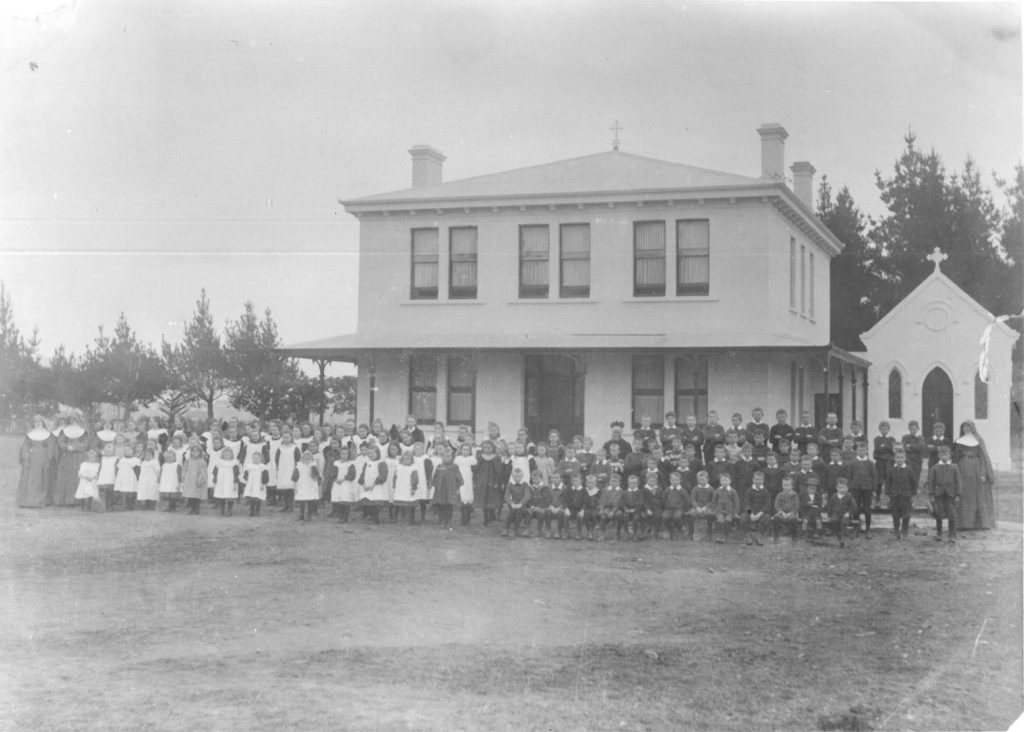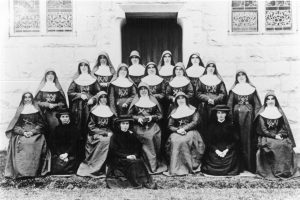
At the time, Mary MacKillop was virtually exiled to Sydney by Adelaide’s Bishop Reynolds over a conflict around the governing of the Institute and the Bishop had selected the three women. Once they’d arrived in Temuka, they wrote regularly to Mary describing their life in New Zealand with its adventure, homesickness, fulfillment, strangeness and faith.
Sister Calasanctius Howley was Mary MacKillop’s assistant and not a favourite of the Adelaide Bishop. He was sending her as far from Mary’s influence as he could. Having once been in a shipwreck, Calasanctious was terrified of the sea and Mary had promised her mother she would not put Calasanctius through that again. The Bishop was not as considerate. Cal had emigrated from Ireland with her family and she and her sister Anne had joined the Institute. Now at 35, Cal inspired confidence in the group and from the time she arrived in Temuka she set about establishing the other two, because her own stay was temporary.
Sister Raymond Smyth was 30 and had been born in South Australia of Irish parents. She was an experienced teacher by the time they set off and was pleased to have the company and leadership of Cal. Raymond was the tallest of the three and quite striking. The other two joked in their letters to Mary MacKillop that she must have looked “the part of superior of the group” because a benefactor singled her out and gave her their first donation after they arrived. However, Raymond did not feel the same self-confidence at the time. She was the only one of the three to remain in New Zealand. Later she became the first Provincial of New Zealand and moved to Auckland.

The three set off overland from Adelaide to Melbourne, in October 1883 boarding the SS Hauroto to Hobart, from there to Port Chalmers in the South Island and finally to Lyttleton. They travelled by train from Christchurch to Temuka, where the people and their priest awaited them. After a couple of days they opened the school and soon realised that three teachers were not enough to cope with the increasing roll and for other schools planned by the priest.
The parish priest of Temuka, French Marist Louis Fauvel, had learned about the Josephite Sisters while he was convalescing in Sydney. When he was appointed to South Canterbury he realised that the Sisters would be well suited for the children of the mainly Irish farming families scattered around the parish. He repeatedly asked Mary to send Sisters and prepared the house and school to her specifications. Although only three of the expected five Sisters arrived in 1883 he was undaunted in his plans for more schools.
In the first month, two young women, Catherine Fitzpatrick (Sister Clara) and Mary Anne Goodwin (Sister Bernadette) joined the little community — the first of many women of the district over the years to become Sisters of St Joseph.
St Joseph’s School is still operating in Temuka and there are two Sisters living in the town. One of them is from the South Canterbury area.
Ann Gilroy rsj
Images:
[1] RHA 709 Temuka c1899, Sisters and pupils in front of the new convent built in 1897.
[2] RHA 182 Temuka, South Canterbury taken on Mother Mary MacKillops’ first visit to Aotearoa New Zealand 18945 [1895]. Sister Raymond Smyth is seated to the left of Mother Mary in the front row.
